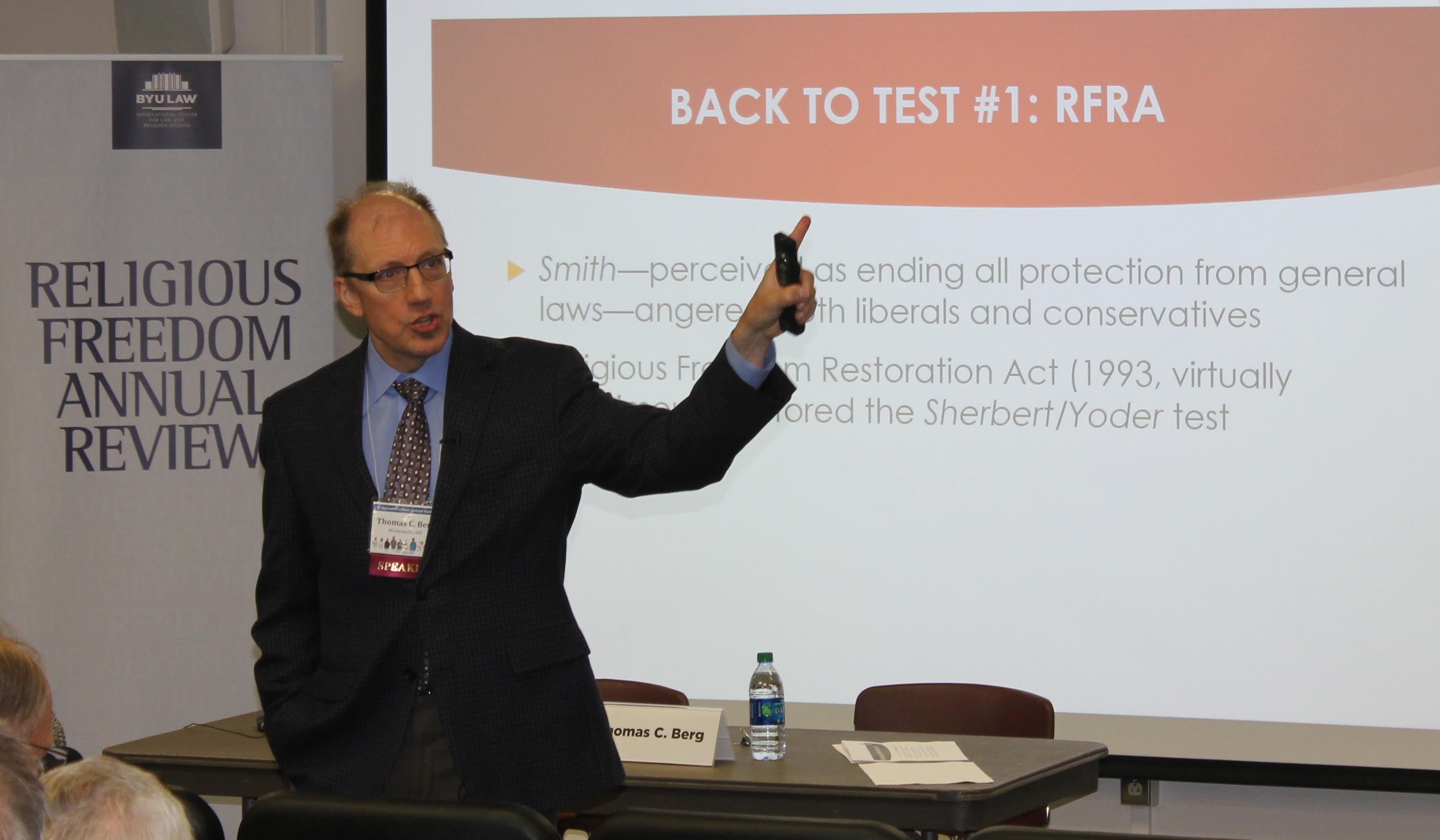Workshop: Media Stream: Religious Freedom 101 for Journalists Part 1: How Did We Get Here – Thomas C. Berg

by Abdullah Hassan, 2018 ICLRS Student Fellow
The session “Religious Freedom 101 for Journalists Part 1: How Did We Get Here” was moderated by Jane Wise, Associate Director, International Center for Law and Religion Studies, J. Reuben Clark Law School, Brigham Young University. The speaker was Thomas C. Berg, James L. Oberstar Professor of Law and Public Policy at the University of St. Thomas School of Law.
Professor Berg began his presentation by talking about the development of religious freedom over the last 50 years. He started in the present with the two most recent Supreme Court cases, Trump v. Hawaii (discriminatory restriction aimed at one faith, Islam) and Masterpiece Cakeshop (secular prohibition, anti-discrimination, happens to conflict with a religious belief), and how important both of these cases will be for the future of religious freedom in America. He then laid out two categories of religious freedom issues and argued that they actually overlap. The first category dealt with “relative consensus rules.” From the Government not being able to penalize someone for their religious beliefs (because belief has absolute protection) to the government not being able to penalize a viewpoint in religious speech, the history of consensus rules over the last 50 years have given greater weight to those wanting to practice their religion freely. Category II dealt with the “The Main Controversy” and Professor Berg discussed general laws with a secular purpose that do not target religion, but conflict with religious practice in a particular case. Some of the examples he discussed included drug laws and Native American sacramental peyote use and contraception mandates and how some businesses/nonprofits may not support it.
Professor Berg then transitioned to talking about “Religion Neutral Laws,” specifically the Sherbert and Smith tests. From 1960-80 the Supreme Court said neutral and general law was invalid in particular cases if it burdened religious practice without compelling government interest, and the Smith test (1990) shifted it to where “neutral generally applicable law can be applied to religious practice; no exemptions.” Professor Berg then discussed the shift from Smith test to the Religious Freedom Restoration Act (1993) which restored the Sherbert test (protecting religious minorities even from unintended burdens). In the end, Professor Berg’s message was that the landscape for religious freedom has changed so much in such a short period of time, and that we need to continue to do what we can to spread religious freedom for all and to teach each side, conservative, Muslim, Christian, etc. to support the freedom of religion.